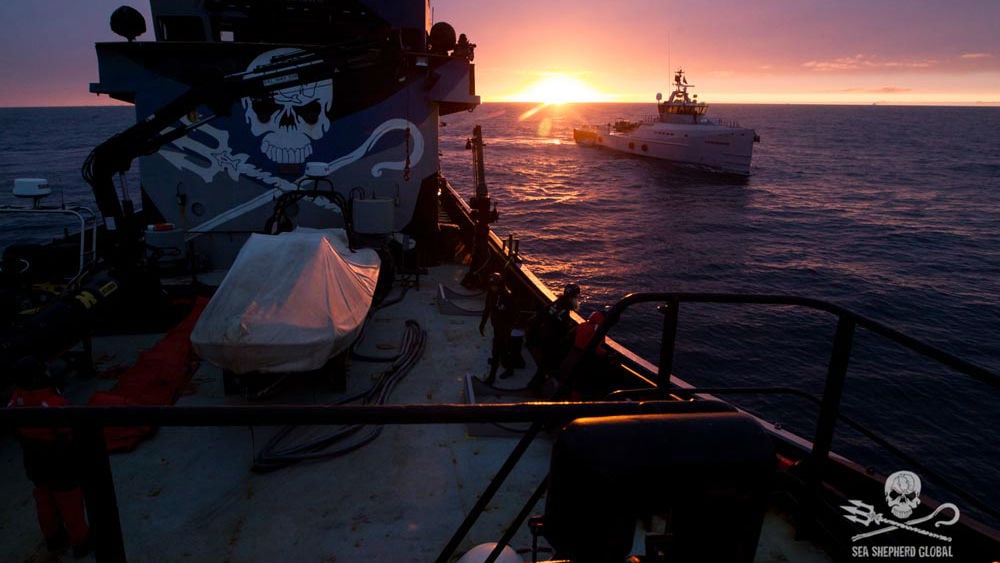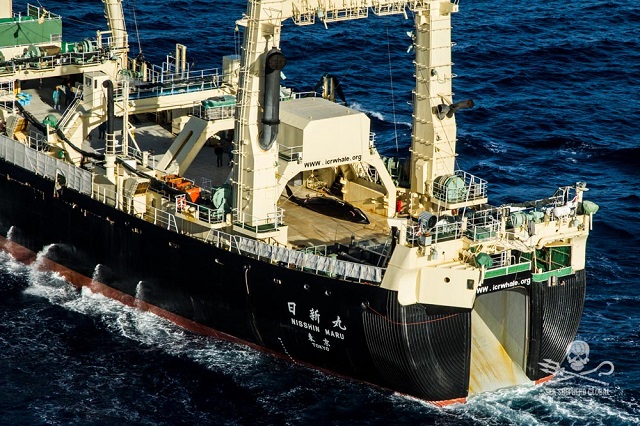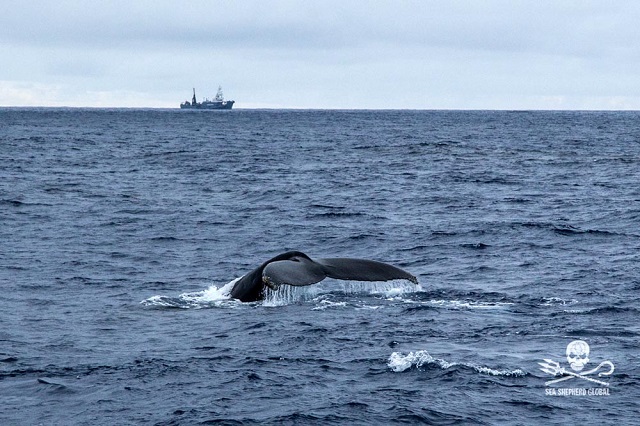Is This the End of Operation Nemesis?

The arrival of the Ocean Warrior in Henderson, Western Australia, marks the end of this year’s anti-whaling campaign against Japanese whale poachers in the Southern Ocean.
Our ships have been at sea for 93 days (Ocean Warrior) and 90 days (the Steve Irwin). During this entire time, they searched for the floating slaughterhouse the Nisshin Maru, but we regret to say we were unable to lock onto the stern of the Japanese factory ship.
We won’t know how successful we have been until the whaling fleet returns to port and announces the number of whales they’ve killed, but we do know that we have kept them on the move during our time in the pristine waters of Antarctica and cost the company millions of dollars in doing so.
Considering the length of time the whaling fleet has remained in the Southern Ocean, it’s clear our presence severely limited the effectiveness of their poaching operations. Their greatly reduced quota of only 333 whales (thanks to Sea Shepherd's previous years of campaigning) could easily be reached within mere weeks of uninterrupted whaling. But this time the whalers needed more than three months, and it’s still doubtful they've reached this target.
 We knew this would be a very difficult campaign for several reasons:
We knew this would be a very difficult campaign for several reasons:
• The whaling fleet’s new whaling program (NEWREP-A) doubled the size of the hunting area from previous years (under the JARPA II program deemed “not for scientific purposes” by the ICJ in 2014), making it more difficult for us to track them down.
• The reduced quota of 333 whales makes it harder for us to be as successful as before if we measure our success by the number of lives we save. When their self-allocated quota was 1,035 whales, we were usually able to prevent them from killing more than a third of that each season, but not less, despite our efforts.
• The extended duration of the killing season allows the whalers to stay down in the Southern Ocean as long as the weather allows. It also makes it more difficult for Sea Shepherd to intervene the entire whaling season as our fuel capacity is limited.
• The whaling fleet’s fuel supply vessel allows them to stay in the Southern Ocean and run at high speed for the entire season.
• One of the other changes in the so-called “research” program is the transferable quota: any whales we manage to save this year can simply be added to the quota in the following years.
In Sea Shepherd’s case:
• We need to cover far greater distances than before, thus burning far more fuel than before.
• Whenever we got near the harpoon vessels or found discarded whale blubber in the sea that indicated we were close to where recent kills occurred (and therefore near the fleet), the factory ship simply took off full speed in the opposite direction.
• The Steve Irwin was shadowed by the Yushin Maru 3, thus taking one of the harpoon vessels out of action for 36 days.
• The Ocean Warrior was detected on several occasions by other harpoon vessels, a clear sign that these ships were actively trying to track our new interceptor vessel to relay our position to the Nisshin Maru. Obviously that takes them out of action as well, and the superior speed of the Ocean Warrior made it easy to drop the tailing vessel, no doubt making the whaling fleet very nervous.
Additional factors:
• Weather has been really bad this year, limiting the number of days that whaling was possible.
• The whalers have indicated that they do not want any confrontations with Sea Shepherd. This obviously is a very different strategy from previous campaigns, when our ships were rammed, nearly disabled and even lost in one case because of Japanese whalers.
• The reason for this change in strategy is obvious: the Japanese whalers want to show our intervention is useless, that they will reach their quota despite our presence. They hope it will lower our morale until we simply give up.
The question is: did they succeed in breaking our resistance?
Even not knowing if they have reached their quota, I can still confirm they did not. Even not being able to get one of our ships behind the slipway of the factory ship (our ultimate goal), we still caused mayor disruptions to their whaling program.
Any whale that was saved from the 333 condemned to death was worth us going to the Southern Ocean again this season. But even if the quota is met in full, once again Sea Shepherd was the only organization standing in the way of this government-sponsored poaching operation.
We captured images of a dead whale lying on the slaughterhouse ship’s deck while the international community did nothing, and while the Australian government in particular welcomed the Japanese Prime Minister’s official state visit with open arms.
Why? Because of trade as well as political agreements with Japan. Financial gain over the preservation of social and intelligent species. Stubborn pride over ecological sanity. One nation against the world’s opinion.
This year has taught us that we need to do more if we’re going to stop the whale poachers next season. We are a grassroots NGO fighting a war against the Japanese-government funded whaling fleet. We rely on donations and volunteers, while they spend millions to sustain this slaughter for the non-existent demand for whale meat and an industry which hasn’t generated income in over a decade.
Captain Alex Cornelissen is Global Director for Sea Shepherd.

The opinions expressed herein are the author's and not necessarily those of The Maritime Executive.
